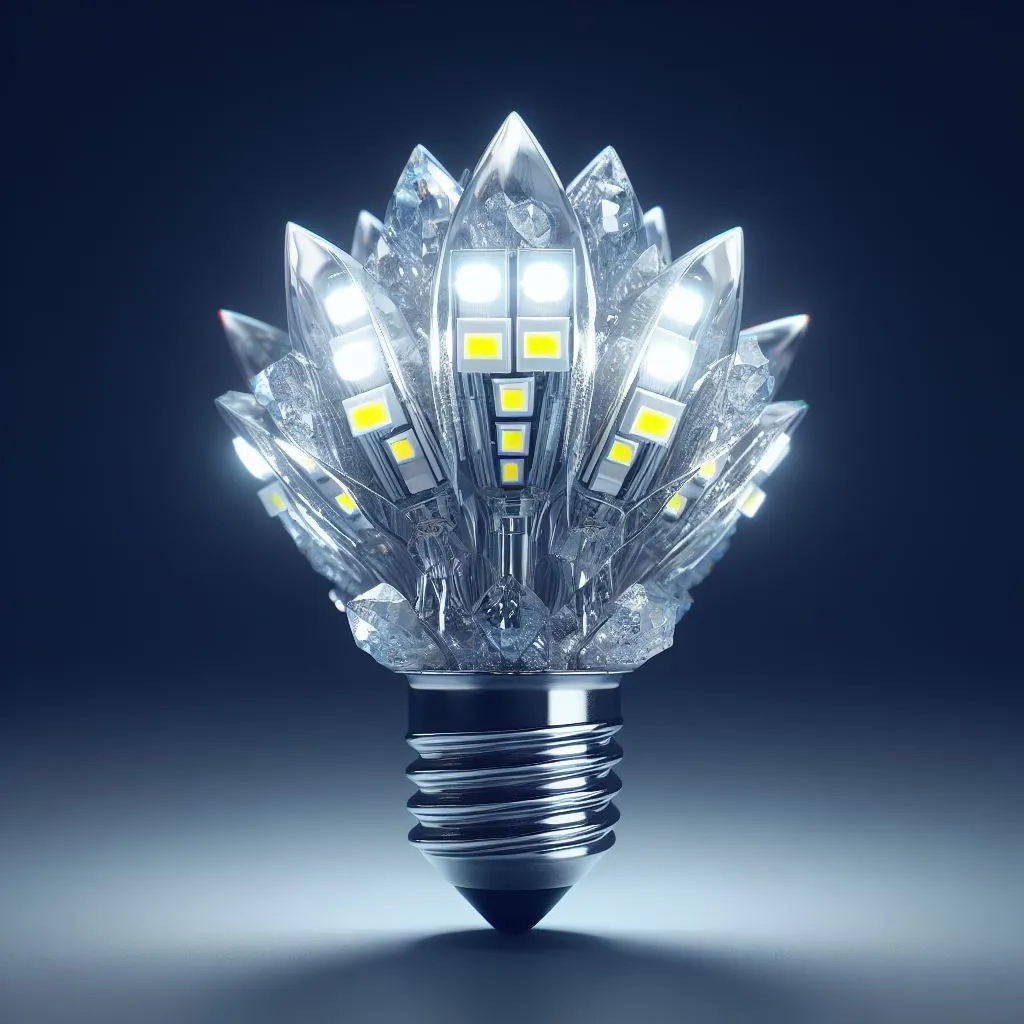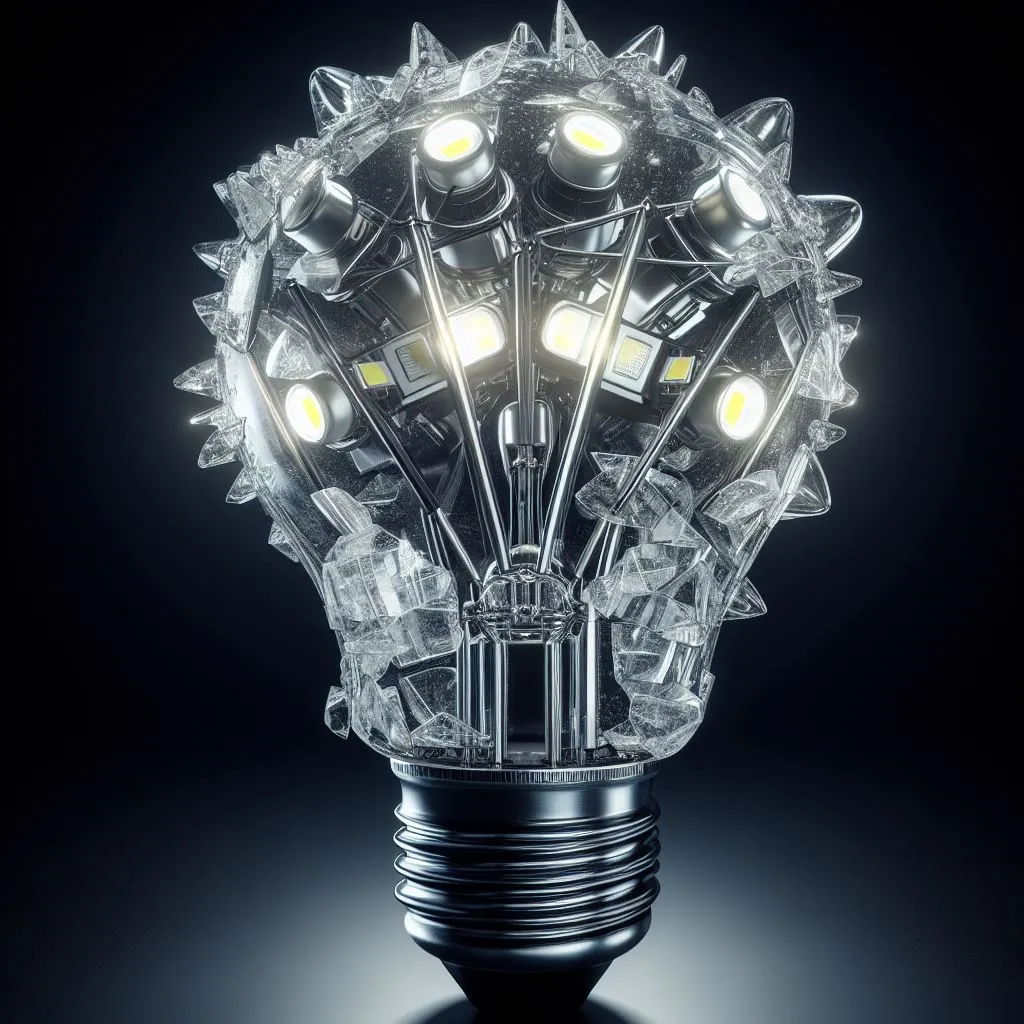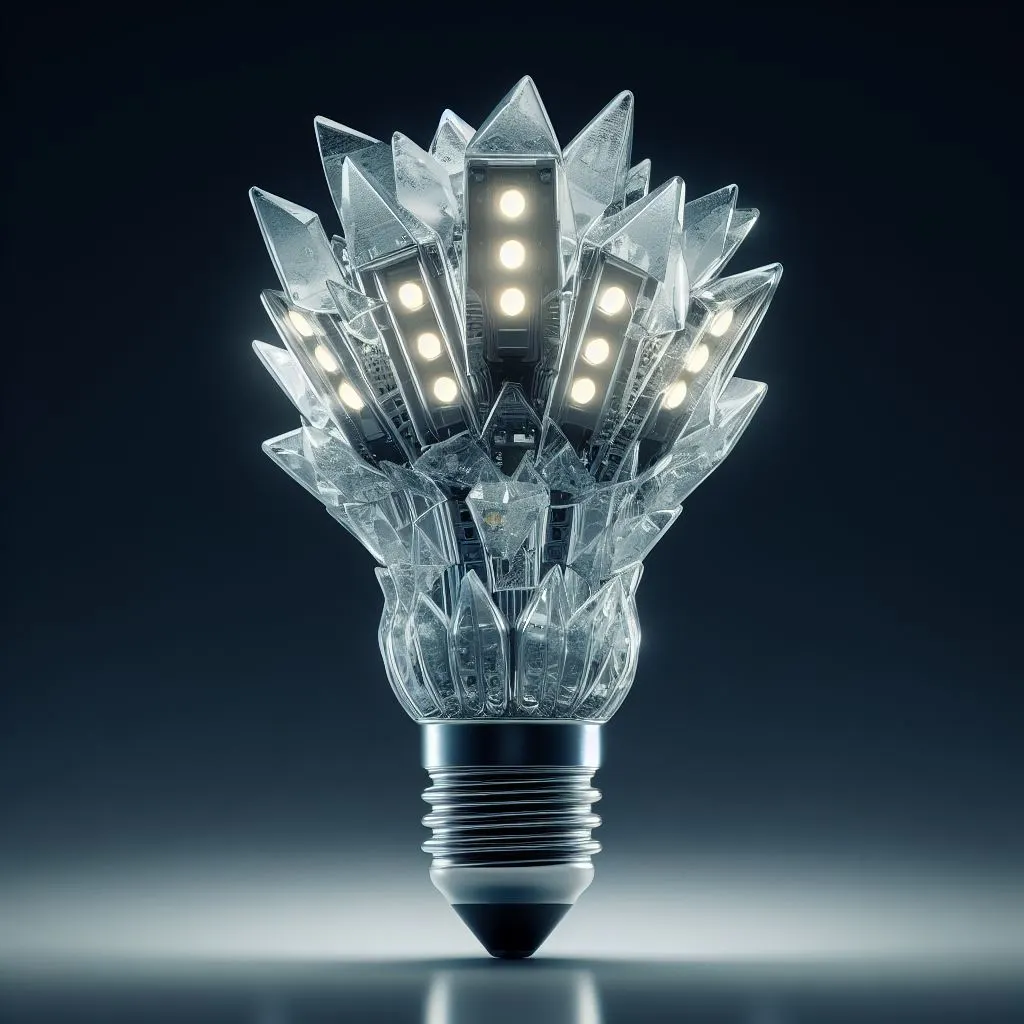Defining LED Headlights
LED headlights are headlight technology that utilizes light-emitting diodes, or LEDs, to produce a brighter and more efficient lighting source than traditional halogen lamps.
These lights use less energy and last longer, providing a much cleaner and brighter light. While LED headlights have many advantages, there are also several potential disadvantages to consider before switching.
Advantages of LED Headlights
LED headlights offer several benefits, from improved visibility and brighter light to low energy consumption and long life. They’re much more efficient than conventional halogen headlight bulbs, which can wear out quickly and require frequent replacements.
LED headlights are much brighter than traditional halogen headlights, offering up to 10 times the brightness of halogens while still producing significantly lower heat levels.
This reduces glare and improves visibility on dark roads. Additionally, LEDs require less power than traditional halogen headlights, making them 50% more efficient and lowering energy costs.
LED headlights also have a longer life expectancy than halogen headlights, ranging from 30,000 to 50,000 hours, compared to the typical 1,000 to 2,000 hours of halogens. This is mainly due to their lack of filaments, which are prone to burning out over time.
Disadvantages of LED Headlights
LED headlights have some drawbacks that must be considered before investing in them.
Some of the most common disadvantages of LED headlights include heat production, cost, limitation in light quality and manufacturing, confusion with halogen lights, installation process, and extra requirements for vehicle compatibility.
Heat Production
One of the most significant drawbacks of LED headlights is that they can produce much heat. This heat can cause the bulbs to become too hot and eventually fail. It can also damage other components of the headlight or even your vehicle.
Cost
LED headlights tend to be more expensive than traditional headlights such as halogen. LED bulbs are generally more complex and require unique operating components.
Limitation in Light Quality and Manufacturing
LED headlights are also limited in light quality and manufacturing compared to traditional headlights. LED headlights can deliver a good amount of light, but they can’t match the intensity of traditional headlights. In addition, LED headlights are often manufactured to a lower standard than other headlights, leading to lower quality parts.
Confusion with Halogen Lights
Another disadvantage of LED headlights is that they can sometimes be confused with halogen lights due to their similar size and shape. This can create dangerous situations where drivers think they have an LED headlight when they have a halogen bulb.
Installation Process
Installing LED headlights is also more complicated than installing traditional headlights. To install LED headlights, you must have the correct adapter and ensure that the vehicle is compatible with the specific LED headlight you are using.
Read Also: Don’t Panic! Causes of LED Daytime Running Lights Flicker
What are the Most Common Disadvantages of LED Headlights?
LED headlights have a few drawbacks, but they don’t outweigh the benefits. Some of the most common downsides to LED headlights include cost, heat production, light quality and manufacturing limitations, confusion with halogen lights, and the installation process.
Heat Production
LED headlights produce some heat when in use. This heat is dissipated through the back of the light housing, although it can also get to the lamp due to the proximity of the bulb components.
This can cause premature failure of the LED bulbs if the heat cannot be managed appropriately, as parts can become too hot and begin to malfunction or fail altogether.
To help combat this issue, many manufacturers are now using a heat sink design, which acts like a radiator to cool off the system.
There is also the risk of interference from other components, such as brake lights or parking lights, that can interfere with the operation of the LED light.
This can be avoided by ensuring the installation is done properly, and the wiring is connected correctly. Additionally, if the lights are not wired correctly, they may dim or flicker, leading to further issues.
Cost
LED headlights are often more expensive than halogen headlights, but they offer higher performance and durability.
LED headlights require specialized installation equipment, and the bulb cost is typically higher than regular halogen bulbs. If you’re on a tight budget, there may be better options than LED headlights.
LED headlights are an excellent investment for those who plan to keep their cars for a while, as they last much longer than halogen bulbs and provide better performance. They may have a higher initial cost, but savings will be gained in the long run.
Limitation in Light Quality and Manufacturing
When it comes to LED headlights, one of the most significant drawbacks is the need for more quality and strength of the lights.
LEDs are much weaker than their halogen counterparts, so they are unsuitable for some applications, such as long-distance driving or off-road use.
Additionally, the manufacturing process of LED lights is complex and can vary between manufacturers, leading to inconsistency in the quality of the lights.
LED headlights are also more expensive than halogen bulbs, making them a costlier option for car owners. This cost barrier can be an issue for those looking for a more affordable way to upgrade their car’s headlights.
Read Also: Can LED Headlights Drain Car Battery? Read + Learn How
Confusion with Halogen Lights
Confusion between LED headlights and halogen headlights is not uncommon. There are several similarities between these two lighting technologies, which can lead to confusion.
The size and shape of the bulbs used in LED lights are very similar to conventional halogen lights, making them look nearly identical. On top of that, both types of headlights also use a 12-volt system, further adding to the confusion.
The most noticeable difference between LED headlights and halogen ones is their amount of light output. LEDs are much brighter and can produce different colours, whereas halogens are limited to a single colour that is generally dull.
Additionally, LED headlights often have advanced features such as automatic on/off, dimming lights and adjustable focus, which are unavailable in halogen headlights.
Installation Process
LED headlights are an excellent option for car owners, but the installation process can be tricky because they require more precision and time than a traditional halogen headlight.
If appropriately installed, the lights can be off-centre or misaligned, putting other drivers at risk. Car owners should seek professional help to install LED headlights correctly.
Speciality tools may be required in some cases, so consulting with an experienced professional who understands the installation process is essential.
The vehicle’s hood must be opened, and the old headlight assembly must be removed. Next, it is necessary to remove the bulbs from the assembly, which requires a meticulous touch.
The new LED headlights should be placed correctly and secured according to the manufacturer’s instructions. The bulbs should be carefully wired appropriately and connected to the car battery. Finally, the headlights should be tested to ensure the alignment is correct.
When installing LED headlights, it is essential to use quality tools and parts and follow the manufacturer’s instructions. By doing so, car owners can be sure they have installed their LED headlights properly and safely.
How to Choose the Right LED Headlight
When it comes to choosing the right LED headlight, there are a few key factors you should consider. Firstly, consider the headlight’s wattage, beam pattern, and lumens.
The wattage tells you how much power the light consumes, while the beam pattern indicates how the light is distributed. The lumens measure the overall brightness of the LED headlight.
Next, consider the colour temperature of the headlight. LED headlights come in various colours, from warm whites to cool blues. You should choose a colour that best suits the purpose of the headlight. For instance, using a white light may be more appropriate for driving.
Finally, take into account the size and shape of the LED headlights. It is essential to ensure that the headlights you choose fit your vehicle correctly and provide enough coverage for your driving needs.
Conclusion
LED headlights offer some unique advantages but can also have drawbacks. While LED headlights may be more expensive than traditional headlights, they are an excellent long-term investment and provide brighter, longer-lasting lighting.
However, the increased heat production and confusion with halogen headlights are two potential disadvantages to consider when making the switch.
When selecting an LED headlight, it is essential to read up on the product and understand the type of light it produces.
Also, please pay close attention to the cost and the installation process to ensure it is the right fit for your vehicle. With the proper research and product selection, LED headlights can be a great addition to your vehicle.
Resources
When researching anything related to your car or the car parts, it is essential always to use reliable sources of information. When researching LED headlights and their advantages and disadvantages, we recommend the following resources:
- American Lighting Association
- The Department of Transportation website on headlights
- Consumer Reports Magazine
- Car Talk
It is always important to consult reliable sources when researching any product or service for your car. As with any purchase, always do your due diligence and research any product thoroughly to make an informed decision.
FAQs About Disadvantages of LED Headlights
What are LED headlights?
LED (Light Emitting Diode) headlights use an electrical circuit to convert electricity into light, providing a very bright and energy-efficient light source.
Are there any disadvantages of LED headlights?
Yes, there are several disadvantages associated with LED headlights, including heat production, cost, limitations in light quality and manufacturing, confusion with halogen lights, and the installation process.
What are the most common disadvantages of LED headlights?
The most common disadvantages of LED headlights are heat production, cost, and limitations in light quality and manufacturing.
Do LED headlights produce heat?
Yes, LED headlights generate more heat than other headlights. This can be a problem when the temperature outside is boiling, as the additional heat generated can cause the LEDs to overheat.
How much do LED headlights typically cost?
The cost of LED headlights varies considerably depending on the make and model. Generally speaking, they are more expensive than halogen headlights.
How can I ensure I choose the right LED headlight?
It’s essential to research before buying an LED headlight. Look at customer reviews to get an idea of which products are good quality, and consider the level of brightness, beam pattern, colour temperature and cost before making your decision.
What is the installation process for LED headlights?
The installation process for LED headlights will vary depending on the make and model. In most cases, removing the old headlight and wiring together new connections are necessary. It’s recommended that you seek the advice of a professional if you need help installing your LED headlights.




